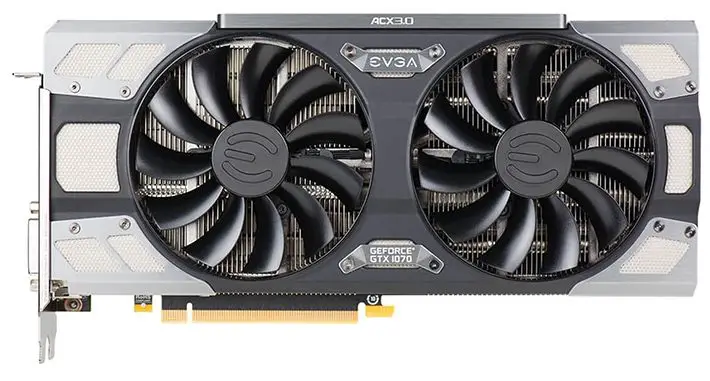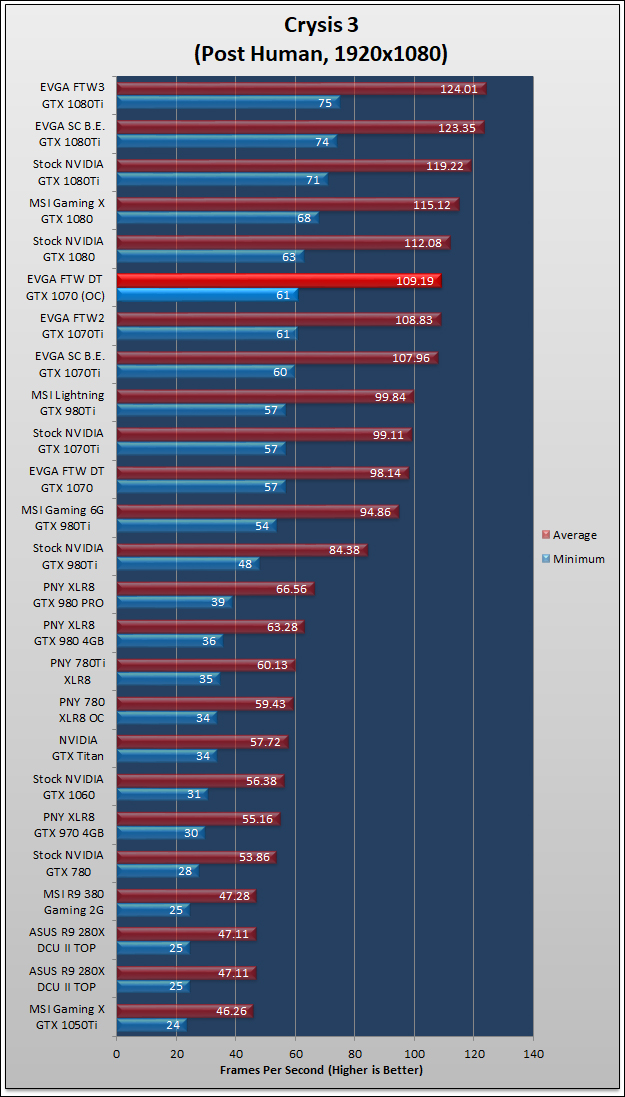
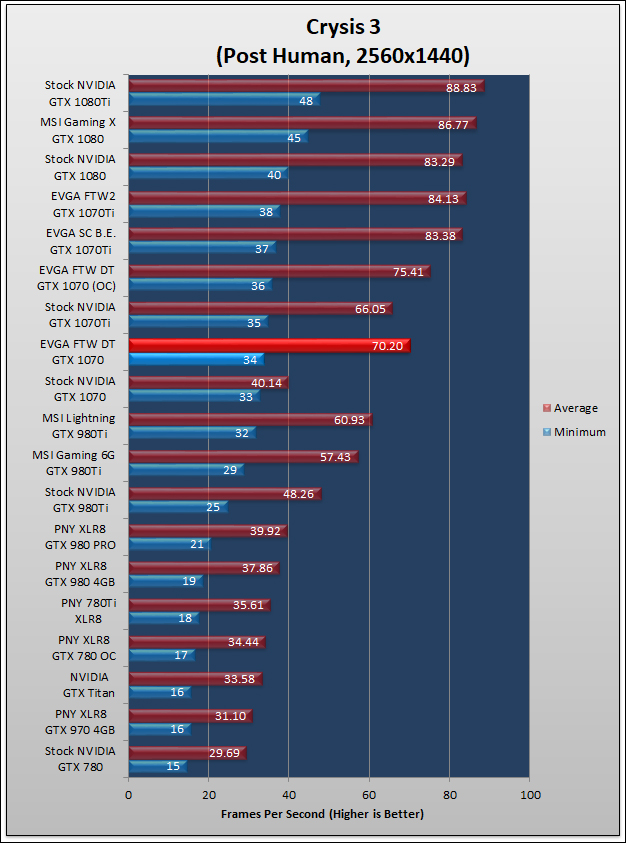
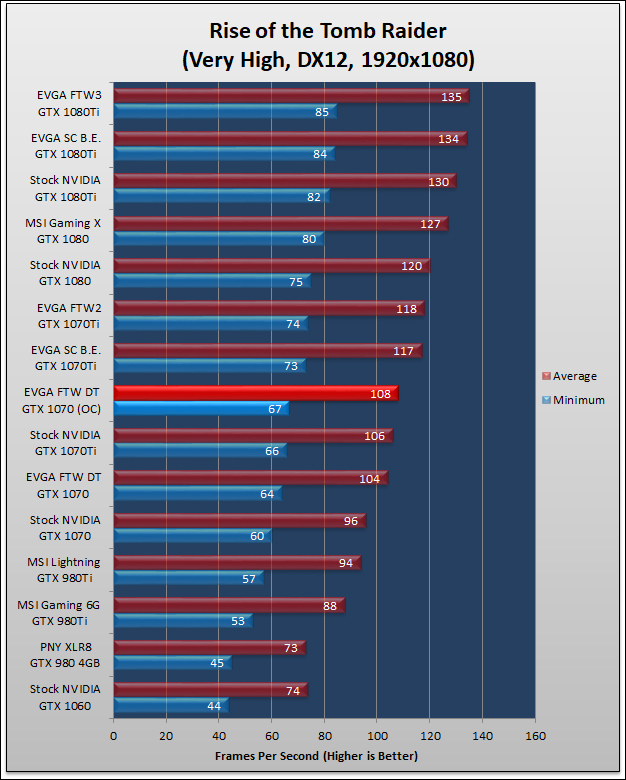
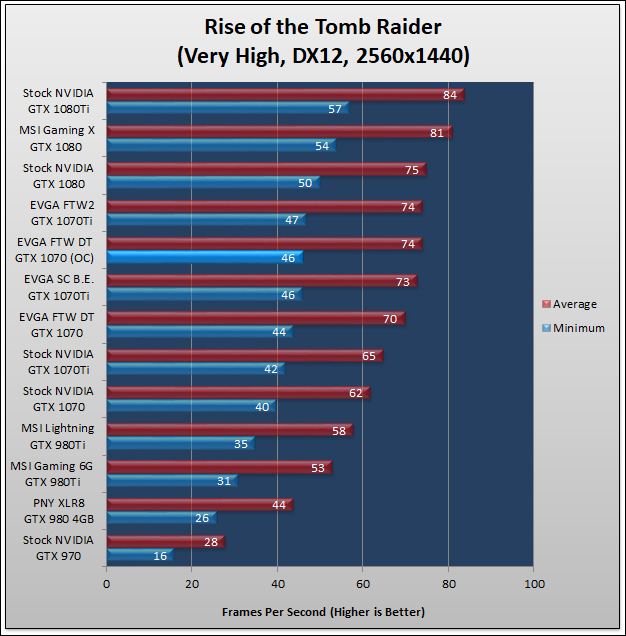

We must admit that the first time we played with a De-Tuned FTW that we entered it with… lowered expectations. After all ‘everyone knows’ these are ‘failed’ cards that EVGA simply threw up their hands at and released them with NVIDIA reference clock speeds. Of course we got such a sweet deal on that card that we really didn’t care all that much if it was not a great overclocker. We were pleasantly surprised by what we found it capable of and quickly found a couple more to add to our stock. All of which performed just as good (and sometimes better) as that first experience.
This particular sample that we recently acquired proved to be just about as good as the others. In some ways better (RAM) and some ways mediocre (core clock). That is the risk you are taking as the end results will be variable and will depend on a given sample. Overall however what you can expect is to get a GTX 1070 whose core will hit in the 2000Mhz ballpark and stay there indefinitely and the RAM will hit in the 8800Mhz ballpark. This particular card hit 1999 and 8808. Which is a bit better than what our EVGA GTX 1070 SC’s can consistently do, and do it with lowered temperatures and less noise. However, it is lower that what you can expect from any EVGA non-DT For The Win GTX 1070.
Now with that said there is a lot more ‘playing’ or tweaking that has to go on to arrive at a final overclock compared to some. If you go into expecting to simply push the sliders all the way to the right and call it good… you are going to be disappointed. This is not really a For The Win card. It looks like one, it sounds like one, but it requires more TLC. How we go about overclocking these is simple. We start with about an 400Mhz boost on the RAM. Then we run video card intensive stress testing (usually Equihash or ETHash if for mining and FurMark for PC gaming systems). If it works for an hour without a crash. We up the RAM speed by 50MHz. Rinse and repeat until it fails. Then dial it back down to where it passed.
Then we turn our attention to the core clock. First thing we do is give it a 120% TDP. Then we apply a smidgen of extra voltage to the core. Then we let it run a core intensive stress test on it… usually X16R as that is one tough set of algorithms (or of course FurMark for PC gaming systems). If it passes this test we then boost the core clock by 100Mhz. Rinse and repeat until failure. Dial it back and let it run. If it goes for 24hours on a random combination of algorithms its ‘good enough’. If you really want to dial it in further 25Mhz increments and combinations of slightly lowered RAM clocks will get you to 99%. To get that last one percent requires doing the above but with more core voltage applied. Do not just push the slider all the way to the right. That will needlessly reduce the cards lifespan for little extra gain!
This is not what we call a difficult endeavor but it does take time and patience. If you do not have an abundance of both… a EVGA De-Tuned card is not right for you. This is what you have to be willing to trade in return for getting a For The Win class cooling solution without the usual FTW price tag.
